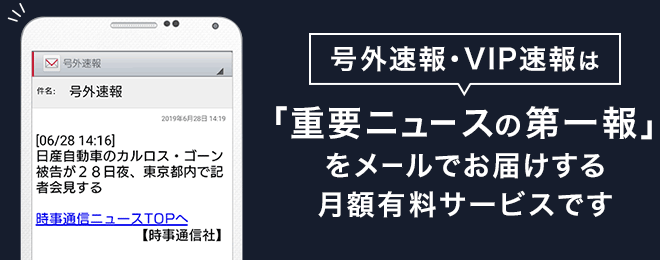コカ・コーラのプラごみ、年間約60万トンが海や川に流出と予測
 【ワシントンAFP=時事】コカ・コーラ製品のプラスチックごみが、2030年までに年間約60万2000トンに達し、世界中の海や河川に流れ込むとする分析結果を、環境保護団体オセアナが26日に発表した。これは、約1800万頭のクジラの胃を満たすほどの量に相当するという。(写真はコカ・コーラの100%リサイクルペットボトル)
【ワシントンAFP=時事】コカ・コーラ製品のプラスチックごみが、2030年までに年間約60万2000トンに達し、世界中の海や河川に流れ込むとする分析結果を、環境保護団体オセアナが26日に発表した。これは、約1800万頭のクジラの胃を満たすほどの量に相当するという。(写真はコカ・コーラの100%リサイクルペットボトル)オセアナの試算は、2018~23年にコカ・コーラが公表した容器使用データと、売上成長予測をもとにしたシナリオに基づいている。その結果、同社のプラスチック使用量は30年までに年間413万トンを超えると予測された。
プラスチックごみが水生生態系にどれほど流入するかを推定するため、研究者らは2020年に学術誌「サイエンス」に発表された査読済みの手法を適用。その結果、年間60万2000トンという推定値が導き出された。これは500ミリリットルのペットボトル約2200億本に相当する。
オセアナは、この問題の最も効果的な解決策として「再利用可能な容器」の普及を提唱。再利用可能なガラス瓶は最大50回、厚みのあるPETボトルは約25回のリユースが可能とされる。
2024年に学術誌「サイエンス・アドバンシズ」に掲載された研究によると、世界で最もプラスチック汚染を引き起こしている企業はコカ・コーラで、続いてペプシコ、ネスレ、ダノン、アルトリアが上位に名を連ねている。【翻訳編集AFPBBNews】
〔AFP=時事〕(2025/03/26-20:14)
Over a billion pounds of Coke plastic waste to enter waterways-- study

By 2030, Coca-Cola products will account for an estimated 1.33 billion pounds (602,000 metric tons) of plastic waste entering the world's oceans and waterways each year, according to a stark new analysis published Wednesday by the nonprofit Oceana.
That's enough plastic to fill the stomachs of 18 million whales.
The report arrives amid mounting concerns over the human health risks posed by the spread of microplastics, which scientists increasingly link to cancer, infertility, heart disease, and more.
Coca-Cola is by far the largest manufacturer and seller of beverages in the world, said Matt Littlejohn, who leads Oceana's campaigns targeting corporate polluters.
Because of that, they really matter when it comes to the impact of all this on the ocean.
Coca-Cola ranks as the world's top branded plastic polluter, followed by PepsiCo, Nestle, Danone, and Altria, according to a 2024 study published in Science Advances.
Oceana's estimate is based on Coca-Cola's publicly reported packaging data from 2018 to 2023, combined with sales growth forecasts to create a business-as-usual scenario.
The result: the company's plastic use is projected to exceed 4.13 million metric tons (9.12 billion pounds) annually by 2030.
To estimate how much of that plastic will reach aquatic ecosystems, researchers applied a peer-reviewed method developed by an international team of scientists and published in the academic journal Science in 2020 to arrive at the 1.33 billion pounds estimate, which is equivalent to nearly 220 billion half-liter bottles.
For Oceana, the clearest solution to reduce this staggering figure lies in bringing back reusable packaging -- whether in the form of returnable glass bottles, which can be reused 50 times, or thicker PET plastic containers, which are designed for 25 uses.
- Dropped reuse pledge -
Coca-Cola itself acknowledged in 2022 that reusable packaging was among the most effective ways to reduce waste, and committed to a goal of reaching 25 percent reusable packaging by 2030.
But that pledge was quietly dropped in its latest sustainability roadmap, released in December 2024.
The company's updated goals instead focus on increasing recycled content in packaging and boosting collection rates -- while stressing the significant challenges in recycling soda bottles and shifting consumer habits.
Environmental advocates have long warned against overreliance on recycling, arguing that it often serves to shift blame onto consumers rather than addressing the root of the crisis.
Recycling is great, don't get me wrong, said Littlejohn. But if you're going to use recycled plastic to produce more single-use plastic, that's a problem.
Plastic production relies on oil, making corporate plastic use a direct driver of climate change.
Still, there is reason for hope: Coca-Cola already operates large-scale refillable systems in several countries, including Brazil, Germany, Nigeria, and even parts of the United States, such as southern Texas.
They have the largest reusable infrastructure of any beverage company, and they have the ability to grow that and show the way for the rest of the industry, said Littlejohn.
In a statement to AFP, a Coca-Cola spokesperson said that while the company's efforts currently focus on using more recycled materials and improving collection systems, we have been investing and remain committed to expand our refillable packaging options, and this work will continue as part of our consumer-centric strategy.

最新ニュース
-
「おむすび」視聴率、過去最低=関東13.1%―NHK
-
企業献金公開5万円超に=自公国、引き下げで合意
-
中国景況感、50.5に上昇=景気対策が寄与―3月
-
企業献金法案の採決見送り=与野党、期限越え議論継続
-
今治の山林火災鎮圧=避難指示すべて解除―愛媛
写真特集
-
ラリードライバー 篠塚建次郎
-
元祖“怪物” 巨人・江川卓投手
-
つば九郎 ヤクルトの球団マスコット
-
【野球】「サイ・ヤング賞右腕」トレバー・バウアー
-
【野球】イチローさん
-
【スノーボード男子】成田緑夢
-
【カーリング】藤沢五月
-
【高校通算140本塁打の強打者】佐々木麟太郎
















